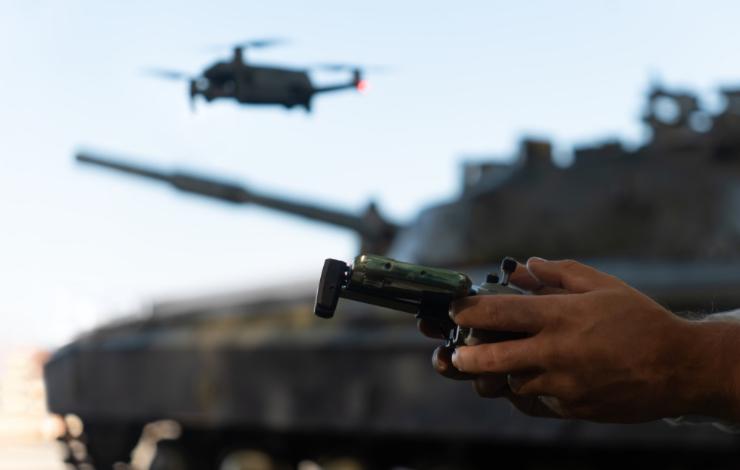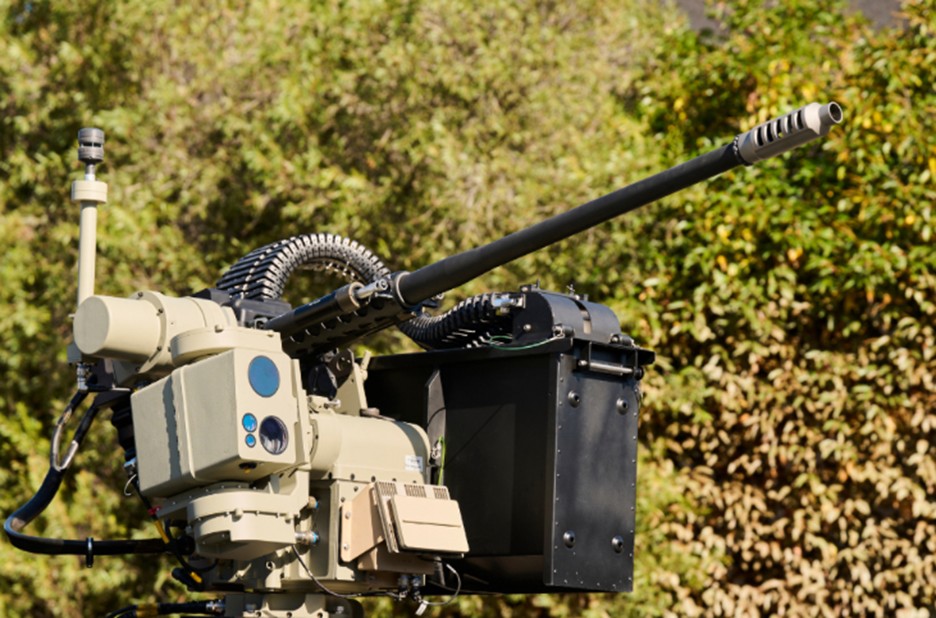
Electro Optic Systems Holdings Ltd (ASX: EOS) has extended its turnaround story with a fresh boost in defence contract momentum, after announcing a new €11.4 million (approximately A$20 million) order for its Slinger counter-drone system from a major international customer. The agreement, announced on 17 November 2025, covers not only manufacturing and delivery, but also installation, training and through-life support, reinforcing confidence in the Slinger program as a scalable and export-ready capability.

Image of flagship “Slinger” Counter-Drone Remote Weapon System (RWS)
The news follows a separate A$108 million Remote Weapon Systems contract award disclosed recently, which will see EOS deliver stabilised weapon stations for Australia’s LAND 400 Phase 3 Infantry Fighting Vehicles program. Together, the two announcements signal what may be the strongest commercial period for the company since listing, placing EOS at the centre of the global shift toward automated battlefield survivability and counter-UAS defence.
The market reaction on Monday afternoon showed continued investor interest, with EOS shares trading at A$5.025, representing a 5.13 per cent gain, while the stock also maintains a 317 per cent one-year return, underscoring a sharp re-rating period driven by operational execution, higher order flow and geopolitical demand.
EOS now operates with two fast-moving commercial product lines benefiting from independent but converging defence catalysts.
The latest Slinger contract win reflects deepening global defence procurement around small-UAS and loitering munition threats. The system, developed alongside US-based targets and test partners, integrates sensors, radar tracking and kinetic defeat capability to address low-altitude, low-signature drone attacks — now seen as a priority requirement across NATO, Indo-Pacific and Middle Eastern markets.
Speaking on the announcement, EOS management stated that recent operational deployment feedback has contributed to rising export interest across multiple jurisdictions, and that active evaluation programs remain underway.
Alongside Slinger, the A$108 million Remote Weapon Systems framework sits under the LAND 400-Phase 3 contract supporting Australia’s infantry digitisation program. The work scope includes production, delivery, system integration and sustainment requirements, ensuring long-term domestic program engagement.

EOS’ 400 remote weapon system featured on Ukrainian Army TV | Courtesy- EOS Webiste
Both announcements reinforce EOS’s manufacturing positioning across two critical defence procurement segments:
Industry analysts have recently framed the counter-UAS market and weapon station automation as two of the highest-growth capital allocation fields within the defence sector, driven by lessons learned across modern combat theatres.
The Slinger announcement comes at a time where global defence ministries are expanding spending profiles due to:
Counter-UAS represents one of the fastest-expanding defence sub-segments, with Western procurement accelerating following Ukraine-Russia battlefield data and Middle Eastern operating lessons.
Analysts at several international defence research groups have recently noted that low-cost unmanned threats now require layered response architectures, linking radar, AI tracking, interceptors and kinetic effectors similar to the Slinger configuration model.
The Slinger order covers:
Meanwhile, the LAND 400-3 RWS supply agreement includes:
While contract timelines have not been publicly disclosed, the nature of the agreements suggests multi-phase revenue recognition expected over operational delivery periods.
EOS has undergone a significant financial and operational reset in recent years, transitioning from a heavily development-focused business model to a delivery-driven strategy aligned with growing pipeline conversion.
The share price performance reflects this realignment, with the stock now trading within a 52-week range of A$0.995 to A$10.42, highlighting volatility but also signalling institutional recognition of operational milestones.
Defence technology procurement cycles are increasingly structured around five measurable attributes:
EOS currently aligns with all five attributes, supported by sovereign production capacity, export approvals and partnerships.
Commentary from defence market experts suggests that companies delivering scalable, modular and upgrade-ready systems are attracting sustained order flow compared to legacy platforms requiring heavy re-tooling.
EOS has not publicly provided updated guidance in relation to backlog or revenue recognition from the new orders, and investors will be monitoring:
The dual announcements strengthen EOS’s positioning as one of Australia’s most globally recognised defence technology exporters, with continued traction in both sovereign and allied markets.
Disclaimer - Skrill Network is designed solely for educational and informational use. The content on this website should not be considered as investment advice or a directive. Before making any investment choices, it is crucial to carry out your own research, taking into account your individual investment objectives and personal situation. If you're considering investment decisions influenced by the information on this website, you should either seek independent financial counsel from a qualified expert or independently verify and research the information.
Tags:
RECENT POSTS
TAGS
Subscribe to the Skrill Network Newsletter today and stay informed
Recommended Articles